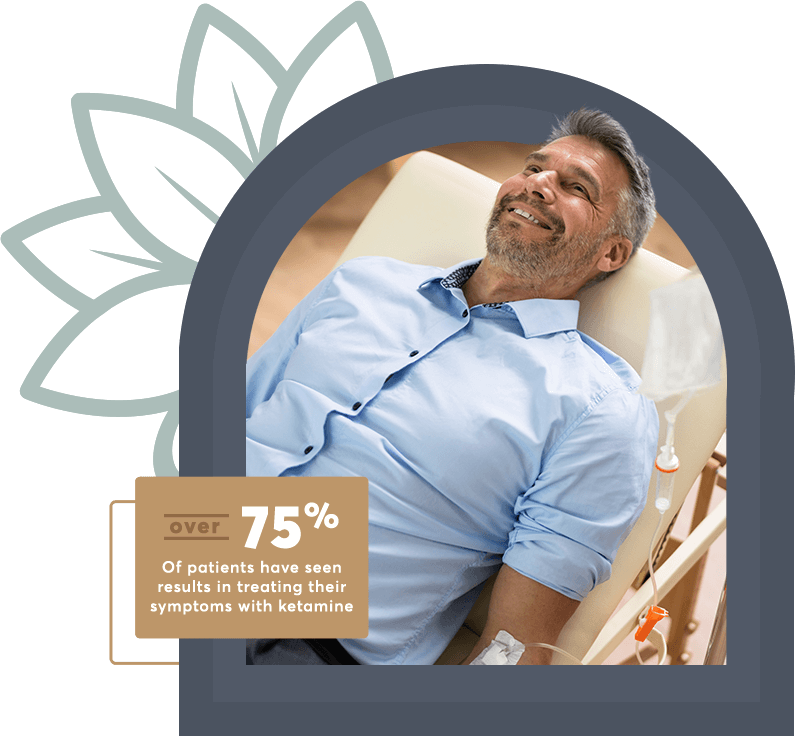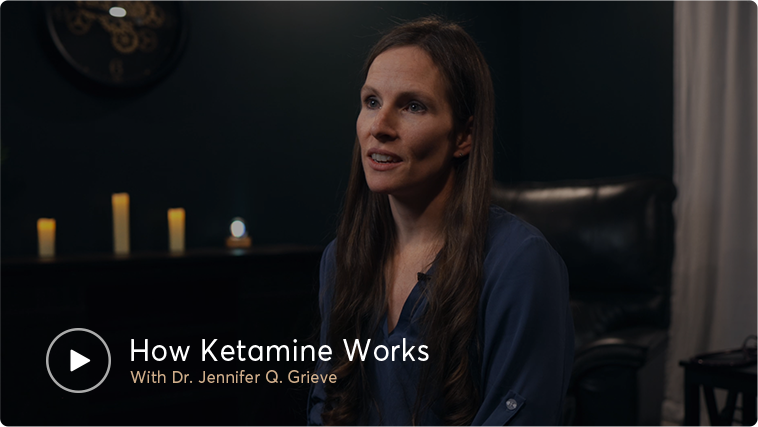
How ketamine infusion therapy is done at 
Modern medicine has seen an influx of ketamine treatment centers across the country. It has grown as a more readily accepted and practiced alternative to various medications without the troublesome side effects. Not all ketamine centers are the same. R and R MD has taken a step further in both the construction of our facility and the therapy itself. Here’s what to expect:
After R and R MD confirms ketamine infusion therapy is right for you, we will tailor an individualized treatment plan and schedule your first session at our state-of-the-art facilities in Brookfield or Mequon, WI.
It is important you enter this treatment prepared in both body and mind. Be aware of what you eat, drink, watch or read as all of this can influence the outcome of your treatment. Do not alter how you take any prescribed medications unless directed by your physician.

3.On the day of your ketamine infusion therapy
From the moment you step through our doors, your comfort will be our first priority. We recommend having someone available to take you home since the ketamine may affect your ability to operate heavy machinery, make important decisions, or engage in certain activities. Plan on your treatment taking around two hours from check-in to check-out. Your day at our treatment center will go as follows:
Check-in
Check-in at our front desk, then you’ll be directed by a staff member to the treatment room.
Reset
Sit back and relax in our comfortable treatment rooms during your infusion session.
Restore
Wait about 1 hour for the effects to wear off. We’ll provide you with recovery tips before you leave!
Common Conditions treated by ketamine infusion therapy
Ketamine has been found to be a groundbreaking treatment for countless conditions. The most common, and most effectively treated conditions include:
How Ketamine Works in The Body
Ketamine is soluble in both water and lipids meaning ketamine can be safely administered through multiple routes: intravenous (IV), intramuscular (IM), oral, or nasal. When it comes to determining which delivery method is best, it is important to look at the bioavailability of ketamine. Bioavailability is the proportion or amount of an administered medication that reaches its destination to have its intended active effect.
IV administration is 100% bioavailable and considered the ideal or gold standard route of administration. This is the method used here at Reset Restore MD, due to the high level of precision that can be obtained using the patient's weight and simple dosage calculations. This enables us to create treatment plans individualized to each patient for maximum effectiveness.
Following intravenous administration, intramuscular (IM) would be the most efficacious with a bioavailability of 93-96%. Intramuscular routes are a reasonable alternative for patients when achieving intravenous access is difficult or when treatment is coupled with other interventions such as massage, yoga or meditation.
Ketamine can be administered intranasally, though it has a lower bioavailability of 45% and can vary greatly depending on the amount absorbed through the nasal mucosa versus the amount swallowed. Additional factors impacting bioavailability include administration technique, mucous in the nose, anatomical variances, and capillary constriction near the membranes can further impede the administration of the dose in its entirety.
Oral ketamine, whether it be lozenges or rapid disintegrating tablets (RDT) are becoming increasingly more common. While these routes are often less expensive, they are less effective. When administered orally (lozenge or RDT) ketamine is metabolized via the GI tract resulting in limited bioavailability. Ketamine administered orally has a bioavailability of 17-29%.
Common Questions about ketamine infusion therapy
Is ketamine infusion therapy safe?
Yes, when administered with the right dose in the right routine, ketamine can effectively treat certain medical conditions. The most common side effects one might feel from ketamine infusion are hallucinations, floating sensations, fuzzy vision or dizziness. Most patients don’t report having any effects, but it will ultimately depend on the person.
How many ketamine infusion treatments will I need?
A single ketamine infusion treatment can help to alleviate symptoms but doesn’t cure conditions permanently. It can typically take up to 3 ketamine infusions to determine if the treatment is working for you. A series of six infusions is recommended to prolong the effects for several weeks or even months.
Do I need a referral from a psychiatrist?
Typically any licensed mental health care professional or physician can refer you. A referral is beneficial, however, not mandatory. R and R MD medical staff will help you to determine if ketamine is right for you.
Does insurance cover ketamine infusion therapy?
Ketamine, while FDA-approved for operating rooms and emergency centers as an anesthetic, is not approved for the treatment of mood disorders. When ketamine is used to treat depression, PTSD, OCD, etc., it is considered off-label use. Off-label use of medication is not covered by insurance.
Will ketamine infusion therapy make me hallucinate?
Ketamine infusions take about one hour and the dosage is tailored to each individual patient. While hallucinations are a possible side effect, not every patient receiving infusions reports this.
Can I get addicted to ketamine from these infusion treatments?
As a Schedule III substance, ketamine has the potential for addiction, but it is highly unlikely that someone will develop an addiction in a setting where the infusions are dosed specifically for each individual and professionally monitored.
Are there any contraindications for ketamine infusions?
Yes, all patients should be properly medically screened before undergoing medical treatment. Ketamine is no different. Our experienced medical providers thoroughly screen all prospective patients prior to treatment. Some contraindications to treatment include, but are not limited to: a diagnosis of schizophrenia, mania, elevated blood pressure, elevated heart rate, unstable heart disease, uncontrolled thyroid disease, liver disease, increased intraocular or intracranial pressure, allergy to ketamine, or pregnancy.



